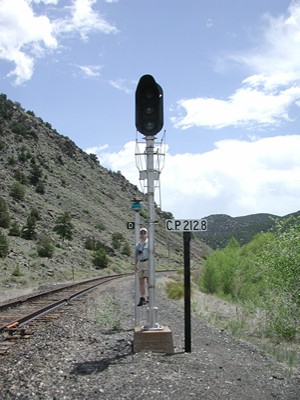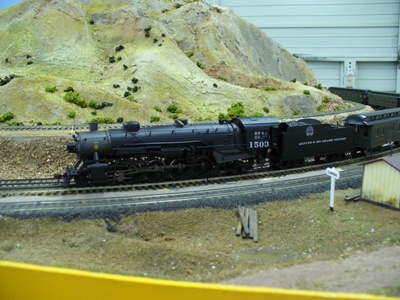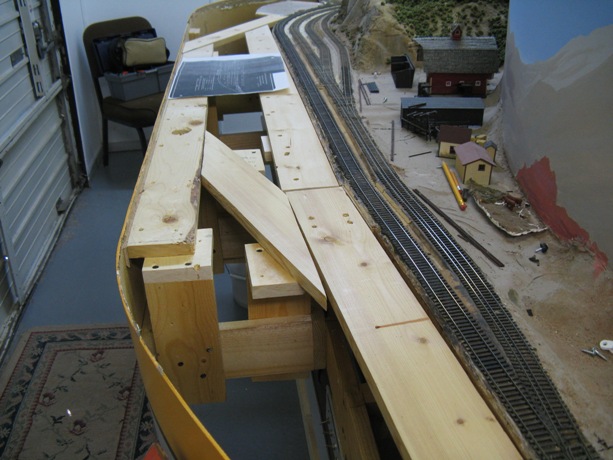
 |
 |
 |
 |
|---|
Origin
Cleora was settled at a bend in the Arkansas River, with inhabitants awaiting the day the Canon City Railroad (really a
front company for the Atchison, Topeka and Santa Fe) would be coming into town and building a depot. Since the Santa Fe
had already built the famed Hanging Bridge, it would be only a matter of days or months. But General Palmer had other
ideas, his Denver & Rio Grande railroad employees, led by Chief Engineer DeRemer, built fortifications down from the
Hanging Bridge to now make it infamous, and held off Santa Fe crews and hired guns in the Royal Gorge War. The D&RG had
previously surveyed the Canon, but the Santa Fe had laid rails first, with room for only 1 railroad through the Gorge.
Eventually, General Palmer and the D&RG won in an eastern court battle which was to become known as 'The Treaty of Boston'. In the treaty, the D&RG won the rights through the Gorge, and shut out the AT&SF into the interior of Colorado for several years hence. But to the detriment of Jackson's dream of connecting Denver to Mexico, the D&RG could not lay rail to Santa Fe, New Mexico through the same duration. The AT&SF was prohibitedn from laying parallel lines to the D&RG, but in less than 10 years rails from Pueblo to Denver would be built, and later become the origin of the Joint Line during WWI.
Meanwhile, the folks in Cleora were ready to greet the D&RG as the winner of the Royal Gorge War. But much to their chagrin, as it was with so many other Rio Grande right of way towns, the railroad built right past Cleora a few miles to establish a new town (Salida), full of newly established town sites at premium prices. With no choice, the townspeople reluctantly relocated to the Railroad town as so often happened along Palmer's lines.
Stockpens
A large stockyard continued to serve the railroad near the original townsite, probably downwind of the residents in
Salida. According to the 1923 Sanborn map (above), the stockpens were serviced by two dual gauge tracks, one on each side
of the pens. On the northern side, toward the mainlines, 5 combination loading chutes were used for the standard gauge.
On the southern side (towards the river), 3 narrow gauge and 3 standard gauge combination unloading chutes were used.
Standard guage cars were only need to be unloaded to be in compliance with the Stock 20 hour rule, (stock had to be
watered and fed at least every 20 hours.)
Today, stockpens still exist at the original site, which are served by truck instead of rail, but not very much else.
| STATION Elev. (ft) |
STATION No. |
Miles from Denver |
Telegraph Calls |
DIVISION | DISTRICT or BRANCH |
Mainline Prototype/ Modeled |
Sidings Prototype/ Modeled |
|---|---|---|---|---|---|---|---|
| CLEORA |
212 | 212.41 | None | SECOND | FIRST (SALIDA - MINTURN) |
SG: 15' DG: 15' |
DG: 15' (North) DG: 15'(South) |
 |
 |
 |
 |
|---|---|---|---|
 |
 |
FACILITIES:
MODELING: